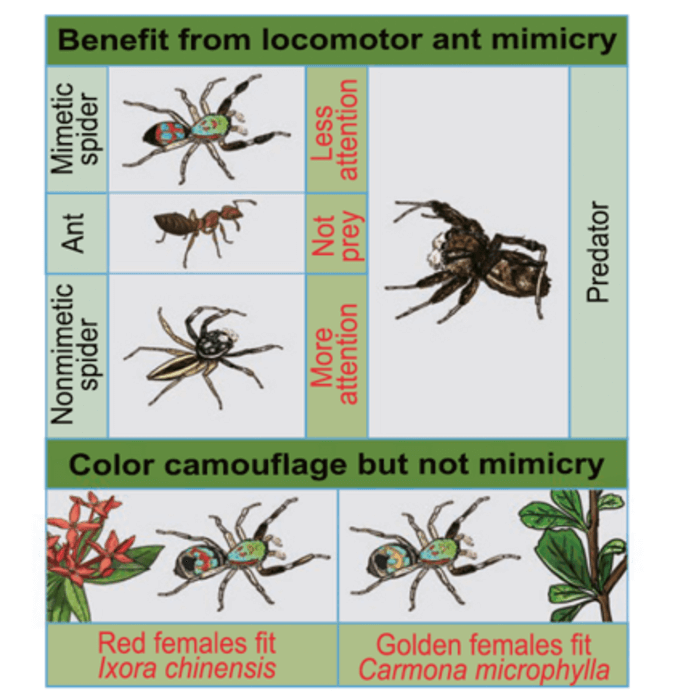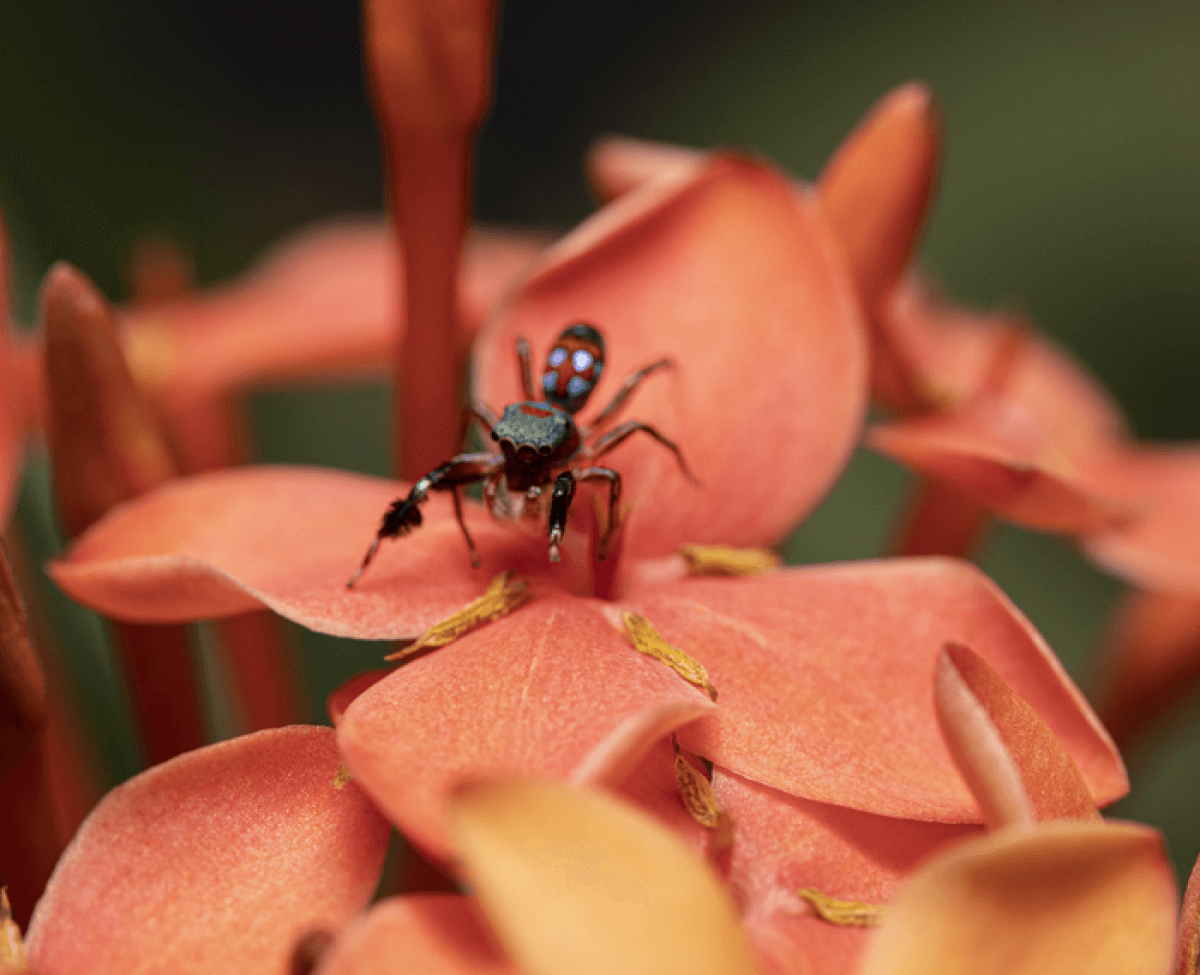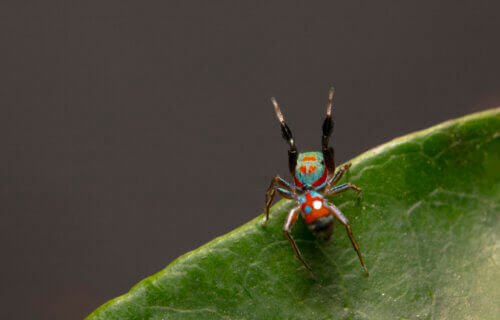BEIJING, China — Scientists discover a unique spider that imitates plants and walks like ants to evade predators. The species, known as Siler collingwoodi, cleverly camouflages itself within surrounding plants and imitates ant movements to stay safe. Unlike other jumping spiders, they lift their front legs to mimic an ant’s antennae and move their abdomens in a bobbing motion to imitate the walk of an ant.
“Ant imitation is an effective defense strategy as ants are generally unappetizing to predators due to their prickly bodies, chemical defenses, venom, and their readiness to retaliate,” explains study author Dr. Hua Zeng, an ecologist at Peking University, in a media release. “Unlike typical ant-mimicking spiders that mimic the brown or black body color of ants, S. collingwoodi has brilliant body coloration. While it seems to blend well with plants from a human’s perspective, we wanted to test whether their body coloration served as camouflage to protect against predators.”
To further investigate, researchers collected wild ant-mimicking spiders from four geographic locations in southern Hainan, China, and brought them to the lab for observation. They also collected another type of jumping spider that does not mimic ants, as well as five species of ants, to serve as models for comparison.
Back at the lab, researchers compared the movement patterns of ants and spiders, studying how they used their limbs, their speed, acceleration, and whether they moved in a straight path or one with more twists and turns.
They found that, unlike most jumping spiders, S. collingwoodi imitated ant movements, raising their front legs like an ant’s antennae and bobbing their abdomens to mimic an ant’s walk. The spiders’ walking style most resembled that of the three smaller ant species, which were similar in size to the spiders.

(credit: Dr. Hua Zeng et al.)
However, the loss of a limb compromised the spiders’ ability to evade predators, likely by preventing them from accurately imitating ants.
“S. collingwoodi is not necessarily a perfect mimic because its gait and trajectory showed high similarity with multiple ant species,” notes Dr. Zeng. “Being a general mimic rather than perfectly mimicking one ant species could benefit the spiders by allowing them to expand their range if the ant models occupy different habitats.”
The team also tested the spiders’ defenses against two likely predators: a similarly-sized jumping spider with color vision called Portia labiate, which specializes in preying on other spiders, and Gonypeta brunneri, a color-blind praying mantis that preys on a variety of animals.
The researchers found that the ant-mimicking spiders were better camouflaged from both the spider and praying mantis predators when on a jasmine plant than a tea tree plant. In trials, the predatory spider was more likely to attack the non-mimicking spider, while the praying mantises attacked both prey species.

“We initially thought that both predators would behave similarly in the antipredation experiments, but in fact the simulated ant locomotion of Siler collingwoodi only worked for the jumping spider predator, while the praying mantis showed indiscriminate attacks on both ants and mimics,” adds study author Dr. Wei Zhang, an evolutionary ecologist at Peking University.
This difference may be attributed to each predator’s likelihood of being injured from eating an ant. While larger praying mantises can consume spiny ants without significant injury risk, this is not the case for predatory spiders.
“For the spider predator, a random attack on an ant could result in injury, so they are very cautious predators and will only attack if they can distinguish S. collingwoodi from ants with a high degree of certainty,” explains Dr. Zhang.
The study is published in the journal iScience.
South West News Service writer Alice Clifford contributed to this report.

